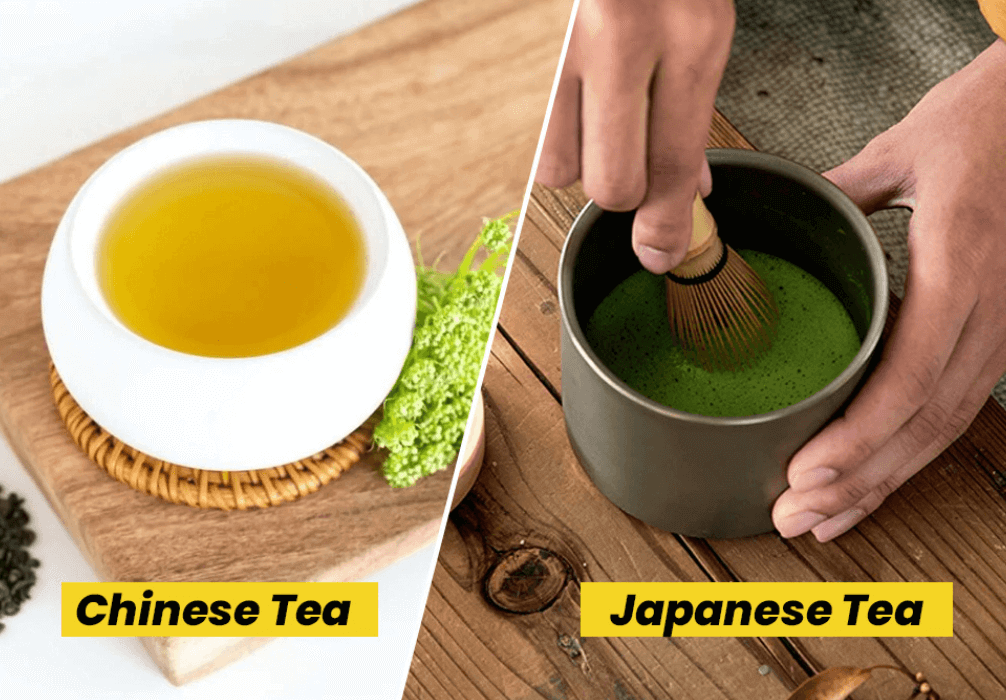Discover The Secrets Of Japanese And Chinese Green Tea
Imagine a world with a lush green landscape, where hot cups of tea bring comfort and invigorating flavors. This is the world of green tea, a beverage enjoyed for centuries and with a rich history steeped in tradition. Two giants stand out in this green landscape: Japanese green tea and Chinese green tea. In this article, we will compare these two green tea powerhouses, exploring a few key factors that define their unique identities. So, get your favorite cup ready and prepare to learn more about these fascinating teas.
1. The Lineage Legacy (History)
China, the undisputed grandmaster, boasts a green tea history stretching back 5,000 years. The first documented evidence dates to the 8th century. Green tea’s adventure to Japan commenced a great deal later, around 800 AD, introduced by Buddhist monks. While the student may also have arrived later, Japan has meticulously honed its inexperienced tea craft, developing a wonderful and revered way of life.
2. The Emerald Aficionado (Aesthetics)
Chinese green tea comes in a breathtaking array of forms. From the delicate, needle-like Longjing to the tightly rolled Dragonwell, each tea boasts a visual appeal as particular as its taste. Japan, on the other hand, focuses on a more minimalist aesthetic. Matcha green tea, arguably its most famous tea, is a colorful green powder meant to be whisked into a frothy beverage. The consciousness here is on purity and the tranquility related to the tea rite.
3. The Flavor Feud (Taste)
This is wherein matters get truly interesting. Chinese green teas offer a much broader spectrum of flavors. Some, like Dragonwell, are grassy and vegetal, even as others, like Bi Luo Chun, boast a floral sweetness. Japanese green teas tend to be more subtle and umami-rich, with a seaweed-like quality. The steaming method in Japan additionally affects a smoother, less astringent brew.
4. The Matcha Matchup (Matcha vs. Other Green Teas)
Matcha green tea has its personal spherical shape. Unlike most green teas, the leaves are color-grown, leading to better degrees of theanine, an amino acid acknowledged for its calming results. Matcha is likewise ground into a powder, permitting you to devour the whole leaf, maximizing its nutritional advantages.
5. The Antioxidant Army (Health Benefits)
Both green tea types are packed with antioxidants, however, Japanese green tea may have a mild edge. Shade-grown Mmatcha or Gyokuro, specifically, boasts a higher concentration of EGCG, an antioxidant believed to provide a range of health benefits. However, Chinese green tea provides its very own particular benefits, with some recognized to support digestion and raise the immune system.
6. The Ceremonial Clash (Culture)
Tea ceremonies are a fundamental part of Japanese tradition. The consciousness is on mindfulness and appreciating the beauty of the preparation method. Chinese tea subculture, at the same time also steeped in the way of life, is extra diverse. From casual tea gatherings to complex Gongfu Cha ceremonies, the emphasis is on enjoying the social issue of tea drinking.
7. The Green Tea Gauntlet (Variety)
China reigns superb in the variety branch. With masses of distinct green tea kinds, each boasting particular characteristics, there is a Chinese green tea for each palate. Japan, even as it presents fewer varieties, makes a specialty of perfecting a few key kinds like Sencha and Gyokuro.
8. The Global Green Tea Grid (Availability)
Chinese green tea is greater without difficulty available globally, with a much wider variety of price factors. Japanese green tea, specifically the best matcha, can be more costly and more difficult to discover. However, the upward thrust of distinctive tea shops has made accessing each kind a great deal simpler than ever earlier than.
9. The Steamy Showdown (Preparation)
Chinese green teas typically involve steeping unfastened leaves in warm water for a short length. Japanese green teas often require decreased water temperatures and shorter steeping instances to maintain their delicate flavors. Matcha green tea preparation method is a unique system regarding a unique whisk to create a frothy beverage.
Last Thoughts
There is no clear winner! Both Japanese and Chinese green tea provide precise experiences and a wealth of benefits. The “best” green tea in the end depends on the individual’s taste or what you are looking for in a cup. So, discover, test, and find out your very own green tea champion!If you want to discover such, a green tea odyssey? Then, here at Kyoto Beverages, we provide a curated selection of the best Japanese green teas, from the colorful energy of Matcha to the calming smoothness of Sencha. Visit our website or contact us today to find out about the world of exquisite Japanese green tea!




































